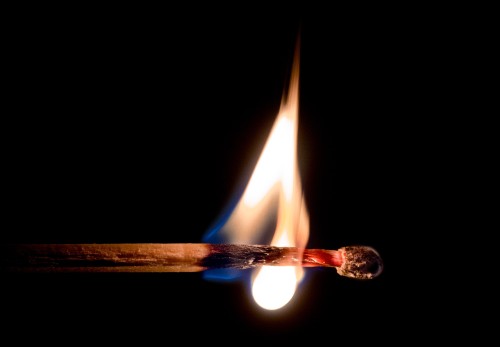
AFRILCATE
WHAT IS THERMAL ENERGY?
Thermal Energy is energy obtained from the vibration of atoms and molecules of a substance due to its rise in temperature. Thermal Energy is also known as heat energy
SCIENTIFIC EXPLANATION OF THERMAL ENERGY
Matters are made up of particles or molecules that vibrates constantly along their mean free path.
When this matter is heated up, the molecules of the substance closer to the heat source first absorbs the heat.
The vibration of the excited molecule increases and it collides faster with surrounding molecules.
The heat is transferred upon collision to these surrounding molecules, they get excited, their vibration increases and they transfer this heat energy further out to other molecules.
Through continuous collision, the thermal (heat) energy is gradually transmitted along the mean free path of the object until the entire object is completely heated up.
A point of thermal equilibrium is said to be reached when all the molecules of the object possess the same heat energy.
At thermal equilibrium, all the molecules of the object vibrate and collide at the same speed.
It’s impossible to talk about thermal energy without mentioning temperature.
Temperature is the degree of hotness or coldness of a substance and its measured with a thermometer.
The temperature readings of a thermometer are either calibrated in Celsius, Kelvin or Fahrenheit scale.
Increasing the temperature of the heat source will lead to higher molecular excitation of the object and a faster collision.
By so doing, the heat will be transferred at a faster rate and the thermal energy of the object will increase.
Increased temperature —> Increased vibration/collision —> Higher thermal Energy
Thermal energy is a type of kinetic energy since it transmitted through the movement and collision of molecules.
Recall: Kinetic energy is associated with motion.
EXAMPLES OF THERMAL ENERGY
- Heat from the sun
- Heat from a burner
- Chilling a warm drink
- A burning object
- Baking in an oven
- The Energy from the earth’s core
1. Heat from the sun
The energy from the sun is a form of thermal energy.
The heat from the sun gets to us through radiation.
Radiation is the transport of thermally generated electromagnetic waves.
We recently published a reader-friendly article about radiation.
See it here: Ultimate Guide on Radiation

2. Heat from a burner
The is one of the common examples of thermal energy in households.
The burner gets heated up and when an object is placed on it, the thermal energy is transferred through conduction to the pot or kettle.

Chilling a warm drink
If ice cubes are placed in a glass of lemonade,
the heat energy from the lemonade will be transferred to the ice through convection and the ice will melt.
Eventually, the lemonade and water from the ice will be at the same temperature, a state of thermal equilibrium.
The lemonade initially possessed higher thermal energy by virtue of the temperature difference.

A burning object
Once an object is set ablaze it possesses thermal energy.
If you lit a match stick and you bring your hands a bit close, you will feel a burning sensation as a result of heat energy produced.
(disclaimer: please don’t bring your hands close unless you have superpowers)

Baking in an oven
Ovens are sources of thermal energy.
Most ovens have a temperature adjusting knob, which increases the amount of heat transferred for faster cooking.
The heat is transmitted to the food by convection from the walls of the oven.

The energy from the earth’s core
Energy gotten from the sub-surface of the earth is called geothermal energy.
Geothermal energy is also an example of thermal energy.
It’s obvious from the name: GEO (meaning earth) + “thermal” energy.
it’s used for heating homes and buildings and also a useful resource for power generation.

UNIT OF THERMAL ENERGY
As a form of energy, thermal energy is measured in Joules (J).
However, in many applied fields in engineering, the British thermal unit (BTU) and the calorie are often used.
The standard unit for the rate of heat transferred is the Watt (W), defined as one joule per second.
SUMMARY OF THERMAL ENERGY
Heat is the amount of energy in a body, temperature is a measure of the intensity of the heat.
There’s this confusion that normally exits between temperature and heat, you can check out our comparison article for better clarification.
An increase in temperature will lead to a corresponding increase in thermal energy.
Thermal energy is considered a type of kinetic energy since it involves the movement of molecules.
Heat energy is just another name for thermal energy.
Heat is transferred from hotter regions to cooler regions through either conduction, convection or radiation.

burning wood

